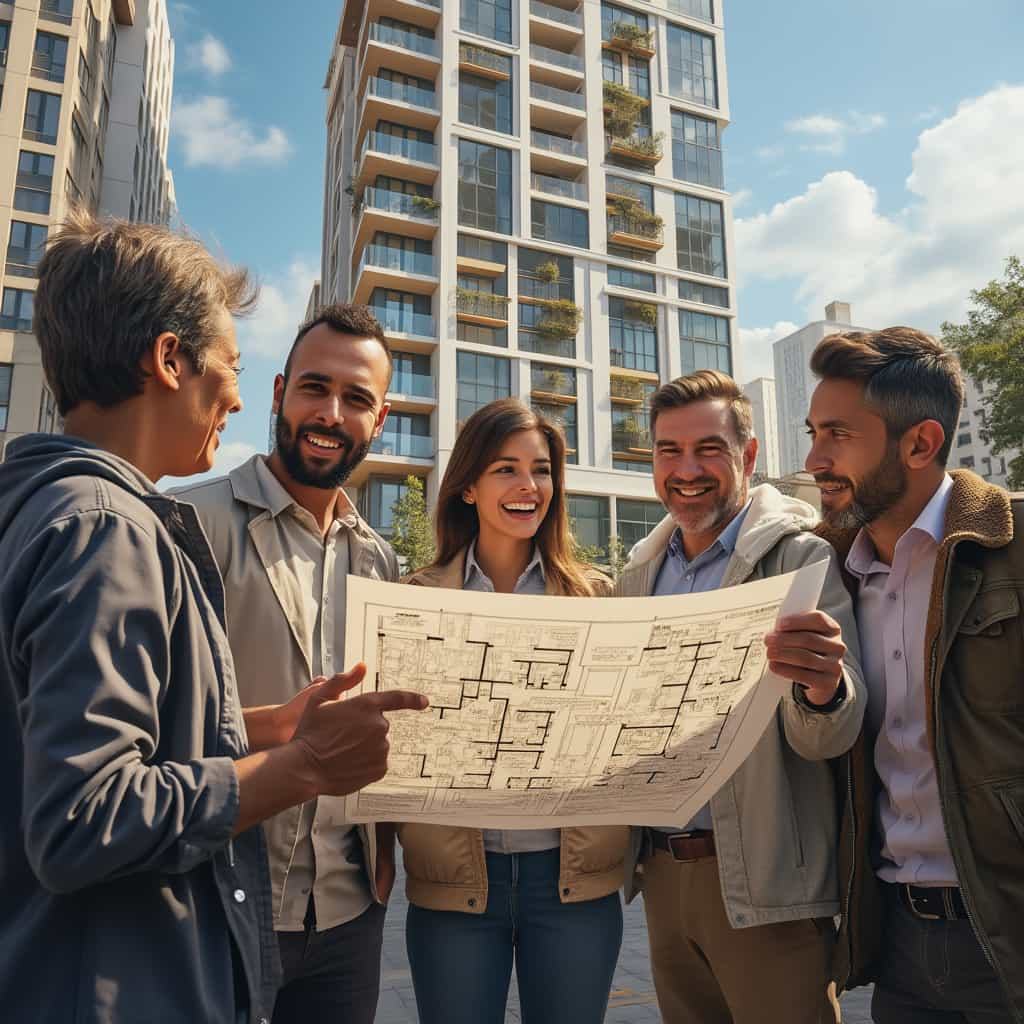The decision to purchase an apartment is often driven by a desire for stability, investment prospects, and the dream of owning one’s own home. However, navigating the intricate maze of the real estate market can be daunting, with numerous proposals and financial implications at every turn. Whether you’re a first-time buyer or looking to invest in a rental property, understanding the nuances of different purchasing options is crucial.
In many urban centers, buying an apartment has become synonymous with securing a slice of an ever-intensifying real estate market. Cities like New York, London, and Tokyo exemplify markets where demand consistently outstrips supply, leading to competitive prices and fierce bidding wars among potential buyers. To successfully purchase an apartment in these locales, prospective buyers often need to dive deep into financial strategies, loan options, and the specifics of each property’s proposal.
Typically, purchasing an apartment involves engaging with real estate agents, evaluating properties, and thoroughly understanding the costs involved. One significant factor is the upfront cost, which not only includes the price of the apartment but also involves additional costs such as taxes, legal fees, and home inspection charges. For instance, in cities with skyrocketing property values, these additional costs can sometimes approach ten percent or more of the property’s price.
Financing options vary, ranging from conventional bank loans to government-backed mortgages. Most buyers tend to secure a mortgage, which involves a down payment—usually about 20% of the purchase price. However, various programs offer assistance with this, especially for first-time buyers or those with moderate income levels, such as FHA loans in the United States or Help to Buy schemes in the United Kingdom.
A significant challenge in apartment buying lies in assessing the property value and future return on investment. Historical market trends and location-specific factors significantly influence an apartment’s value. For instance, properties located in developing districts often provide more substantial returns as urban expansion continues. Conversely, buying in more established neighborhoods may offer stability and incremental appreciation.
Beyond financial considerations, the subjective value of ‘home’ plays a critical role in decision-making. The importance of evaluating lifestyle compatibility cannot be overstated. Amenities such as proximity to work, schools, public transport, and shopping centers can greatly influence the desirability of an apartment. In recent years, with the rise of remote work, space for a home office has become an increasingly sought-after feature.
Comparing proposals becomes vital in ensuring one secures the best deal. For example, new builds often provide modern amenities and energy-efficient solutions, yet may come with a higher price tag. On the other hand, older buildings might require refurbishments, which could turn out to be a hidden cost. It’s crucial to weigh the pros and cons of each option. In areas like Berlin, where housing is traditionally older, potential buyers must consider the renovation potential versus costs.
It’s also important for buyers to be mindful of common pitfalls. Unrealistic expectations, failing to secure pre-approval for loans, and neglecting future resale value are typical errors. Historically, tales abound of buyers who found themselves ‘house-poor,’ committing to properties that strained their financial resources. Seeking advice from financial advisors and real estate experts is recommended.
The apartment market can reflect broader economic trends. For instance, post-2008 financial crisis, there was a marked shift towards more conservative property investments. This trend influenced many to favor smaller, more affordable apartments over large luxury units, aligning with a global move towards minimalism and sustainable living.
In conclusion, buying an apartment requires careful consideration of financial strategies, lifestyle needs, and market dynamics. By remaining vigilant and informed, buyers can ensure they select a property that not only fits their current needs but also represents a sound financial investment for the future. The allure of apartment ownership remains as strong as ever, offering both shelter and the potential for financial growth—two compelling reasons why navigating this market skillfully is crucial.
From historical anecdotes of bustling real estate markets to modern trends shaping buying decisions, the journey to purchasing an apartment is layered with excitement and challenges. By harnessing expert insights, understanding market fluctuations, and aligning personal goals with financial capacity, the path to finding the perfect abode becomes not just a possibility, but a rewarding achievement.
You may also like
The Perks and Challenges of Buying a Detached House in the Suburbs
Buying a detached house in the suburbs offers a tranquil lifestyle with potential financial benefits. This article delves into cost considerations, advantages, and options for suburban homes, offering a comprehensive comparison of the most appealing market proposals.
The Intricacies of Acquiring a City Center Apartment: Proposals, Prices and Perks
Acquiring an apartment in the city center offers numerous advantages, including access to amenities and a vibrant lifestyle. However, it also presents challenges such as high prices and limited availability. This article explores proposals, costs, advantages, and issues associated with purchasing a central city apartment, while providing a comparison of the most competitive offers available.
The World of Bathtubs
The humble bathtub has undergone a remarkable evolution, offering consumers a plethora of choices from luxurious freestanding models to accessible designs for the elderly. This article explores the newest trends, models, and market dynamics in the bathtub industry, providing insights into the innovations and economic factors affecting purchasing trends worldwide.
Bathroom: Style and functionality in Shower Designs
The shower industry is undergoing a remarkable transformation with innovative designs, technologies, and market trends shaping the future of bathroom fixtures. From shower enclosures to combo units and walk-in showers, consumers are now enjoying a variety of options for style, functionality, and value for money. This article delves into the latest trends, new models, and best offers available, providing insights into geographical purchasing behaviors and emerging technologies in the shower market.
